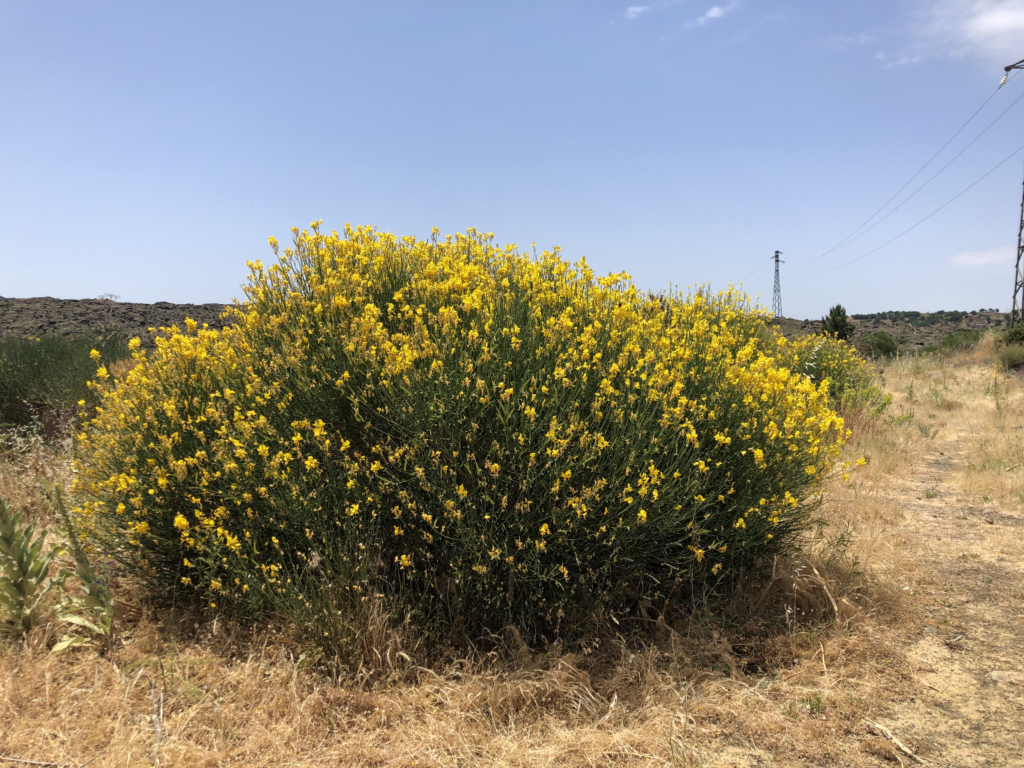Ginestra e le api
Poiché la ginestra è una delle prime piante a crescere sulla roccia lavica, è anche particolarmente importante per le api. Ma non offre loro nettare, solo polline. Quando le api devono volare verso il fiore, il polline si attacca ai loro corpi pelosi e le api lo trasportano da un fiore all’altro – l’impollinazione. Aiutano la ginestra a riprodursi, ma prendono anche un vantaggio per loro stesse. Portano anche qualche polline a casa, ma che fanno con il polline quando ritornano i all’alveare?
I raccoglitori di polline tolgono il polline dalle loro zampe e lo immagazzinano in celle a nido d’ape. Per fare questo, lo mescolano con la saliva, aggiungono enzimi con essa e tamponano gradualmente la miscela nella cella. La cella a nido d’ape viene poi sigillata con un sottile strato di miele. Il cosiddetto pane delle api serve ora come cibo per la covata. Le giovani api appena nate sono anche nutrite dal polline nel primo periodo. Per allevare un’ape, un’ape raccoglitrice deve volare fuori 10 volte. Insomma, circa 25-30 kg di polline sono necessari per anno e colonia di api.
Così l’ape aiuta la ginestra a riprodursi dopo un’eruzione vulcanico e la ginestra aiuta l’ape a nutrire la colonia d’api.
Ecco come ginestra e ape si aiutano a vicenda!
The Ginestra and the bees
As broom is one of the first plants to grow on lava rock, it is also particularly important for bees. But it does not offer them nectar, only pollen. When the bees have flown to the flower, the pollen sticks to their hairy bodies and the bees carry it from flower to flower – pollination. They help the broom to reproduce, but they also take an advantage for themselves. They also bring some pollen home, but what do they do with the pollen when they are back in the hive?
Pollen collectors strip the pollen from their legs and store it in honeycomb cells. To do this, they mix it with spit, add enzymes with it and gradually dab the mixture into the cell. The honeycomb cell is then sealed with a thin layer of honey. The so-called bee bread now serves as food for the brood. Newly hatched young bees are also fed with pollen in the first period. To breed a bee, a honey bee must fly out 10 times. In total, about 25-30 kg of pollen are needed per year and bee colony.
So the bee helps the broom to reproduce after a volcanic eruption and the broom helps the bee to feed the bee colony.
This is how broom and bee help each other!


